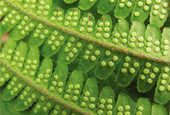-
 Korea.net's 24-hour YouTube channel
Korea.net's 24-hour YouTube channel- NEWS FOCUS
- ABOUT KOREA
- EVENTS
- RESOURCES
- GOVERNMENT
- ABOUT US
View this article in another language
- 한국어
- English
- 日本語
- 中文
- العربية
- Español
- Français
- Deutsch
- Pусский
- Tiếng Việt
- Indonesian
Flora & Fauna of Korea #8
Korea.net publishes a series of articles, “Nature You Meet in the Mountains,” about the peninsula’s mushrooms, insects, trees and herbs & flowers.
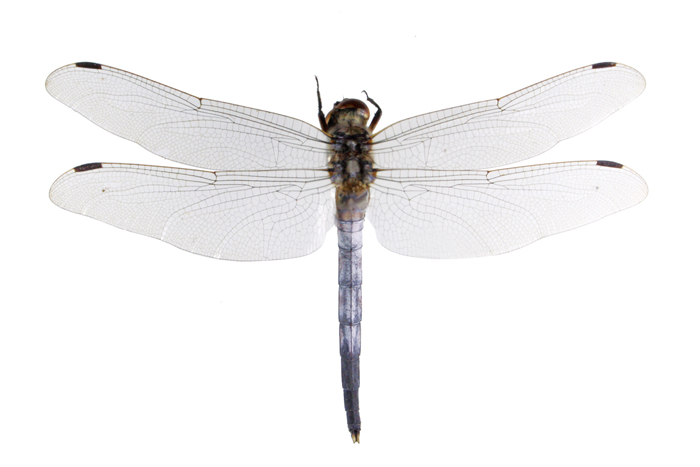
Insects
Name: 밀잠자리 (Mil jamjari)
Scientific name: Orthetrum albistylum speciosum (Uhler)
Distribution: Korea, China, Japan, Taiwan
This dragon fly has an average abdomen length of 35 to 40 millimeters and a wingspan of 40 to 45 millimeters. The back of the head is black on the males and yellow on the females. The frontal tubercle is black. The color of the forehead, ante-clypeus and upper lips are all glossy gray-black on the males and yellow on the females. Three black stripes can be found along the sides of the abdomen.
Ecology: The adults can be observed from the middle of April to the middle of October around the flatlands as well as wetlands, rice paddies and ponds surrounded by aquatic plants. After mating, females are protected by the males. Under this protection, the females spawn on the water surface around swamps or reservoirs.
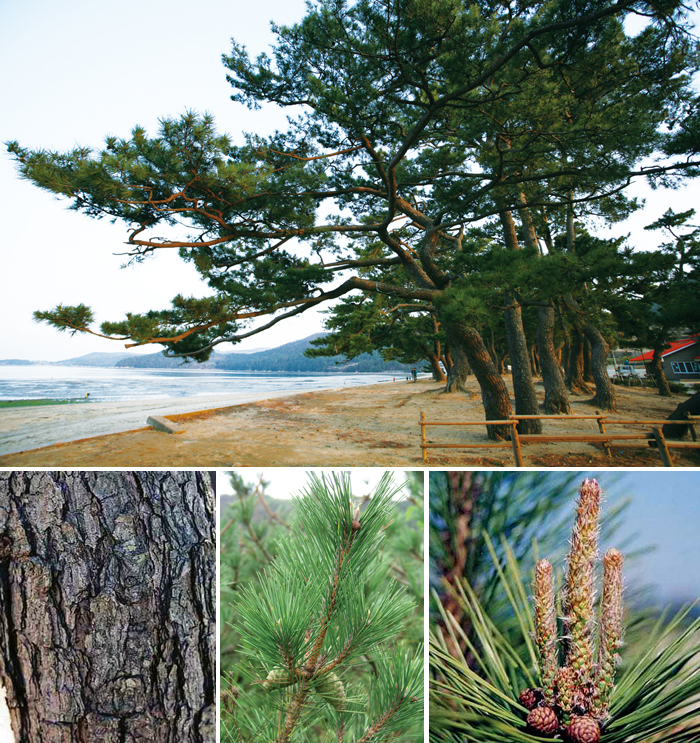
Trees
Name: 곰솔/ 해송 (Gomsol/ Haesong)
Scientific name: Pinus thunbergii Parl.
Type: evergreen with needles, very tall
Blooming season: May
Bearing season: September
Distribution: beachfront nationwide
Normally located on the beachfront, this pine tree grows to a height of 20 meters and has a diameter of about one meter. The bark is dark brown. The needles are dark green, very tough and can be twisted. The tip is pointy. This monoecious tree gives bloom to a purple-brown male flower and an egg-shaped female flower. The fruit is an egg-shaped oval cone. The central part of the seed breaks outward, and there is no part of it that protrudes. The seeds slowly turn greenish-brown.
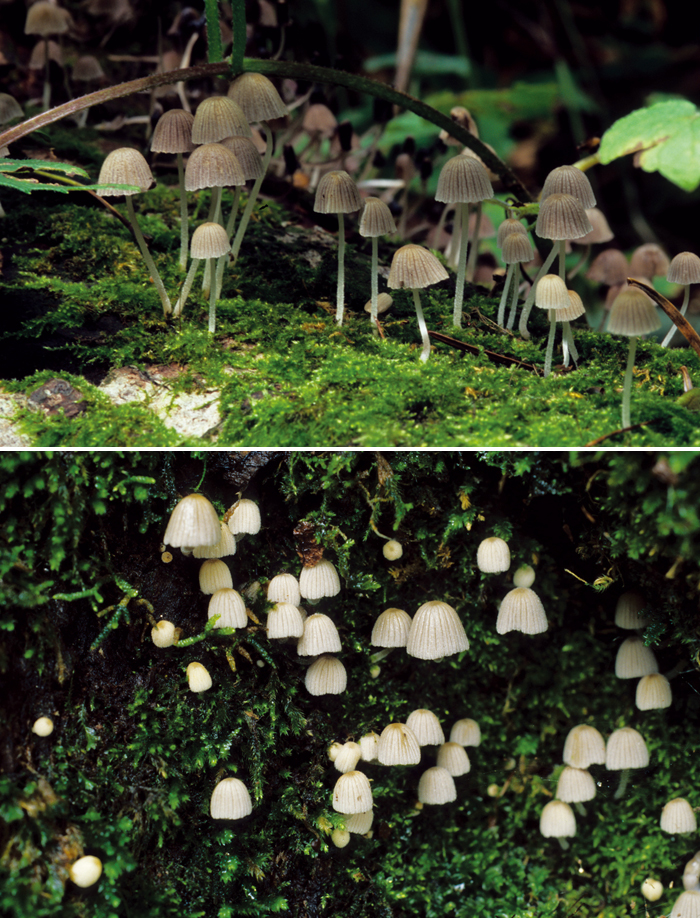
Mushrooms
Name: 고깔먹물버섯 (Gokkal meokmul beoseot/ Cowl Ink Mushroom)
Scientific name: Coprinellus disseminates (Pers.) J. E. Lange
Type: saprophile spore
Print: black
Inedible
This inedible mushroom, known as a trooping crumble cap, grows in multiple clusters from rotting branches of dead trees, stumps and wood buried underground. The pileus has an average diameter of 1 to 1.5 centimeters and as it grows widens from being egg-shaped, semi-round and finally to being bell-shaped. The surface is white or gray, covered with small hairs.
The pleats change color from white to black and the cap can be as large as 2 to 3.5 centimeters. The color is white or translucent. The surface is covered by small hairs. It is very fragile.
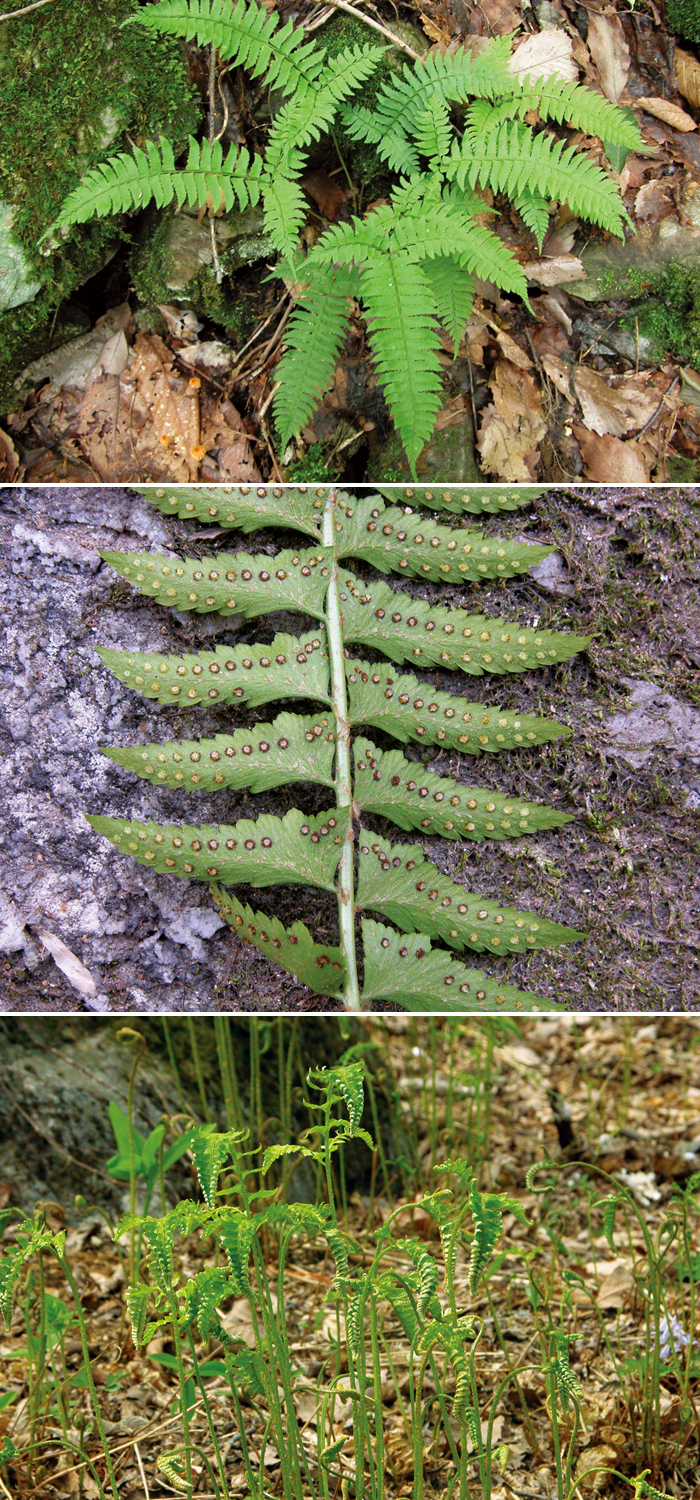
Herbs & Flowers
Name: 십자고사리 (Sipja gosari)
Scientific name: Polystichum tripteron (Kunze) C. Presl
Full bloom: May
Distribution: valleys nationwide
This fern grows around valleys in the mountains. The short subterranean roots grow upward in every direction. The stipe is 10 to 30 centimeters long. The squama sticks close to the axis but falls off easily. The leaf blades can reach a maximum size of 50 centimeters. It develops a leaf with pinnate scales. The squama remains at the back of the leaf for a relatively longer period of time. The sorus develops from scattered pinnules and the indusium falls off early in the season.
*This series of article about Korea’s insects, trees, mushrooms and herbs & flowers has been made possible with the cooperation of the Korea National Arboretum.
Korea.net publishes a series of articles, “Nature You Meet in the Mountains,” about the peninsula’s mushrooms, insects, trees and herbs & flowers.

Insects
Name: 밀잠자리 (Mil jamjari)
Scientific name: Orthetrum albistylum speciosum (Uhler)
Distribution: Korea, China, Japan, Taiwan
This dragon fly has an average abdomen length of 35 to 40 millimeters and a wingspan of 40 to 45 millimeters. The back of the head is black on the males and yellow on the females. The frontal tubercle is black. The color of the forehead, ante-clypeus and upper lips are all glossy gray-black on the males and yellow on the females. Three black stripes can be found along the sides of the abdomen.
Ecology: The adults can be observed from the middle of April to the middle of October around the flatlands as well as wetlands, rice paddies and ponds surrounded by aquatic plants. After mating, females are protected by the males. Under this protection, the females spawn on the water surface around swamps or reservoirs.

Trees
Name: 곰솔/ 해송 (Gomsol/ Haesong)
Scientific name: Pinus thunbergii Parl.
Type: evergreen with needles, very tall
Blooming season: May
Bearing season: September
Distribution: beachfront nationwide
Normally located on the beachfront, this pine tree grows to a height of 20 meters and has a diameter of about one meter. The bark is dark brown. The needles are dark green, very tough and can be twisted. The tip is pointy. This monoecious tree gives bloom to a purple-brown male flower and an egg-shaped female flower. The fruit is an egg-shaped oval cone. The central part of the seed breaks outward, and there is no part of it that protrudes. The seeds slowly turn greenish-brown.

Mushrooms
Name: 고깔먹물버섯 (Gokkal meokmul beoseot/ Cowl Ink Mushroom)
Scientific name: Coprinellus disseminates (Pers.) J. E. Lange
Type: saprophile spore
Print: black
Inedible
This inedible mushroom, known as a trooping crumble cap, grows in multiple clusters from rotting branches of dead trees, stumps and wood buried underground. The pileus has an average diameter of 1 to 1.5 centimeters and as it grows widens from being egg-shaped, semi-round and finally to being bell-shaped. The surface is white or gray, covered with small hairs.
The pleats change color from white to black and the cap can be as large as 2 to 3.5 centimeters. The color is white or translucent. The surface is covered by small hairs. It is very fragile.

Herbs & Flowers
Name: 십자고사리 (Sipja gosari)
Scientific name: Polystichum tripteron (Kunze) C. Presl
Full bloom: May
Distribution: valleys nationwide
This fern grows around valleys in the mountains. The short subterranean roots grow upward in every direction. The stipe is 10 to 30 centimeters long. The squama sticks close to the axis but falls off easily. The leaf blades can reach a maximum size of 50 centimeters. It develops a leaf with pinnate scales. The squama remains at the back of the leaf for a relatively longer period of time. The sorus develops from scattered pinnules and the indusium falls off early in the season.
*This series of article about Korea’s insects, trees, mushrooms and herbs & flowers has been made possible with the cooperation of the Korea National Arboretum.
Related Contents
Most popular
- First hearing-impaired K-pop act hopes for 'barrier-free world'
- Expats could account for 7% of population in 20 years: report
- 'Mad Max' director impressed by 'cinema-literate' Korean viewers
- Show in Italy to present 'thought-filled' Korean craftworks
- Romanian presidential couple visits national cemetery









